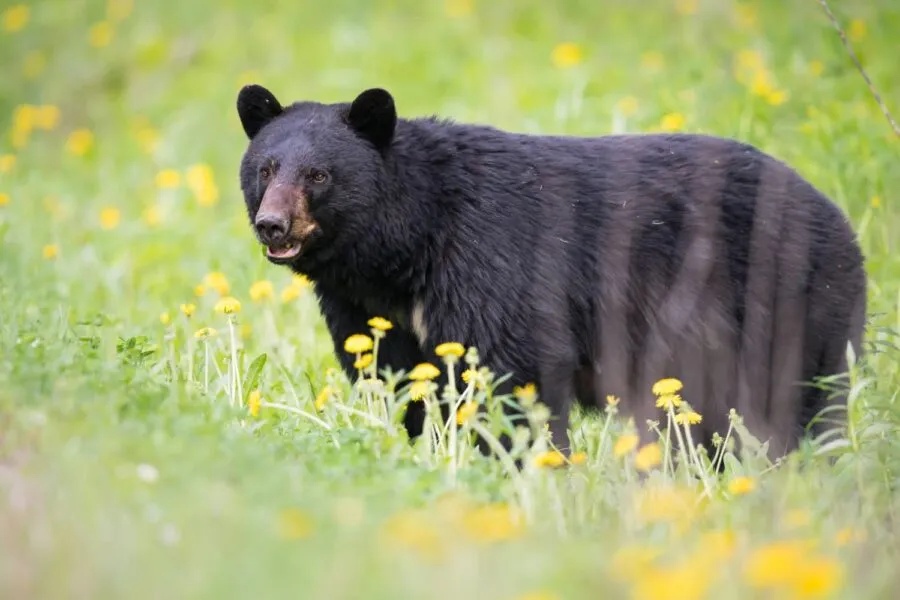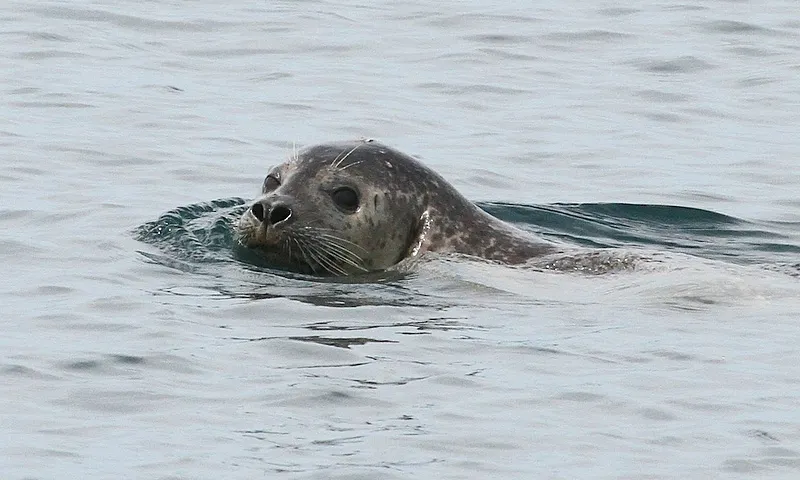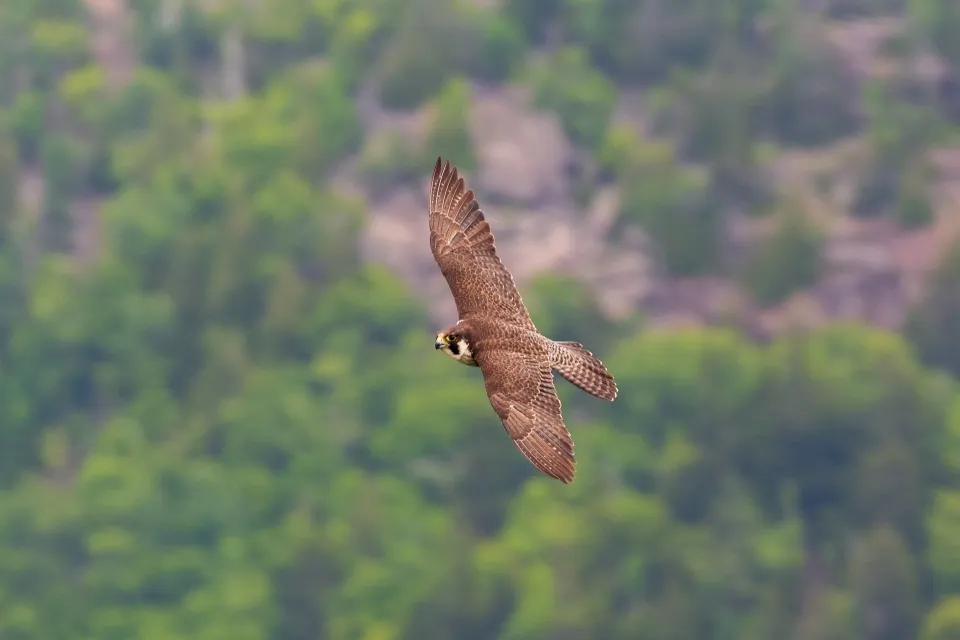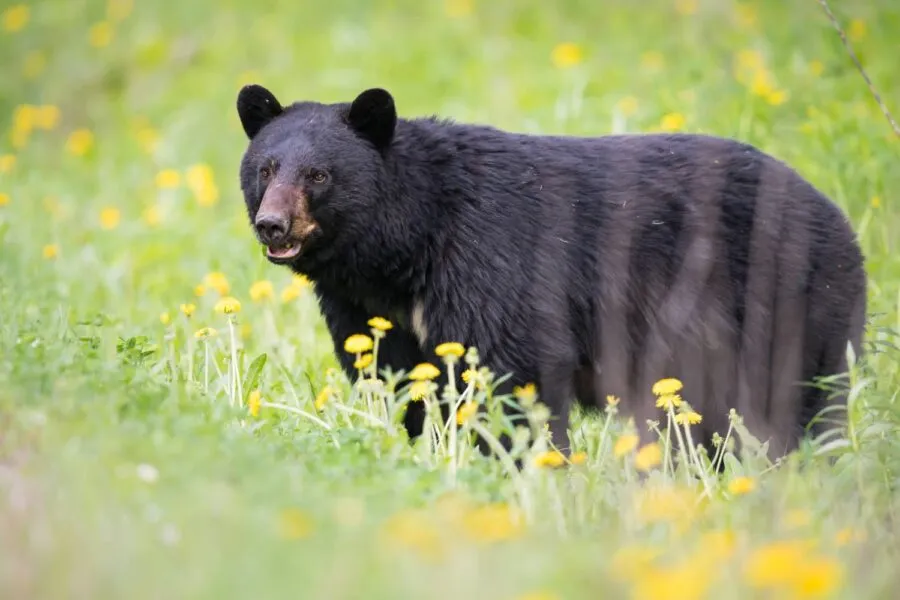
Ultimate Guide to Acadia National Park Wildlife: 15+ Animals You Must See in 2025
Discover the incredible diversity of Acadia National Park wildlife through my personal experiences exploring Maine's coastal wilderness. From the fastest bird on Earth to playful harbor seals, this comprehensive guide reveals where and when to spot over 15 amazing animals, complete with insider tips, safety advice, and conservation insights that will transform your wildlife viewing adventure.
Introduction: Why Acadia National Park Wildlife is Extraordinary
Having spent countless dawn hours perched on granite cliffs and explored over 150 miles of Acadia's diverse trails, I can confidently say that Acadia National Park wildlife offers some of the most spectacular animal encounters on the East Coast. During my seven visits over the past five years, I've witnessed everything from peregrine falcons diving at 200+ mph to harbor seals playfully bobbing in tidal pools, creating memories that continue to inspire my passion for wildlife photography and conservation.
What makes Acadia National Park wildlife truly exceptional is the park's unique position where northern boreal forests meet temperate deciduous woodlands, all wrapped around a dramatic rocky coastline. This convergence of ecosystems creates habitat diversity that supports an remarkable array of species—from Arctic visitors like snowy owls to year-round residents like black bears, and seasonal migrants including over 300 bird species that have been documented within the park's 49,000 acres.
The park's location along the Atlantic Flyway makes it a critical stopover point for migrating birds, while its pristine lakes, ponds, and streams provide essential habitat for amphibians, fish, and aquatic mammals. The intertidal zones along Acadia's 35 miles of coastline teem with marine life, from tiny periwinkles to magnificent whales that can be spotted from shore during certain seasons.
Unlike many western national parks where wildlife viewing requires extensive backcountry hiking, Acadia National Park wildlife can be observed from accessible trails, scenic drives, and even visitor centers. This accessibility, combined with the park's compact size and diverse habitats, means that wildlife enthusiasts can potentially spot dozens of species in a single day—something I've accomplished multiple times during my visits, including one memorable morning when I documented 23 different bird species before 10 AM.
Best Wildlife Viewing Locations in Acadia
Through years of systematic exploration, I've identified the most productive locations for observing Acadia National Park wildlife. Cadillac Mountain, reaching 1,530 feet as the highest point on the Eastern Seaboard, serves as an exceptional vantage point for spotting raptors, especially during migration periods. I've witnessed golden eagles, peregrine falcons, and sharp-shinned hawks from the summit, particularly during September and October when thermal currents carry migrating birds past this prominent landmark.
Jordan Pond represents perhaps the crown jewel for Acadia National Park wildlife viewing, where the 3.3-mile perimeter trail offers encounters with beavers, common loons, and great blue herons. During my early morning visits in June and July, I've consistently observed beaver activity near the pond's northern shore, where their lodges and chewed stumps provide clear evidence of their engineering prowess. The pond's crystal-clear waters also support brook trout and chain pickerel, while its surrounding wetlands attract painted turtles and various amphibians.

The Schoodic Peninsula section, often overlooked by casual visitors, provides the most reliable opportunities for marine Acadia National Park wildlife observation. The rocky intertidal zones here support harbor seals, which I've photographed during low tide periods throughout the year. The peninsula's relative isolation also increases chances of spotting larger mammals like white-tailed deer and the occasional black bear, particularly in the early morning hours along the Schoodic Head and Anvil trails.
Great Head Trail offers spectacular seabird viewing opportunities, where I've documented common eiders, double-crested cormorants, and during summer months, Atlantic puffins can sometimes be spotted from the dramatic clifftop viewpoints. The trail's proximity to offshore nesting islands makes it an ideal location for observing marine bird behavior, especially during breeding season when activity levels peak.
Get High-Quality Binoculars for Wildlife ViewingSeasonal Wildlife Viewing Guide
Spring (March-May) represents the most dynamic period for Acadia National Park wildlife observation, when returning migrants overlap with year-round residents and winter visitors. Peregrine falcons arrive in early March to claim nesting sites on precipitous cliffs, prompting temporary trail closures that protect these remarkable birds during their most vulnerable period. I've witnessed the spectacular courtship flights of these fastest animals on Earth, reaching speeds that make photography challenging but absolutely thrilling.
During spring, Acadia National Park wildlife activity intensifies as amphibians emerge from winter dormancy to breed in temporary pools and permanent water bodies. Spring peepers create a symphony that echoes through the forests, while spotted salamanders make their annual migrations to breeding pools, often crossing park roads during warm, rainy nights. This seasonal movement provides excellent opportunities for night photography and environmental education, though visitors should exercise caution to avoid disturbing these sensitive creatures.
Summer (June-August) showcases Acadia National Park wildlife at its most active and visible, with extended daylight hours providing optimal viewing conditions. Marine mammals become increasingly active in the warmer waters, with harbor seals hauling out on rocky ledges during low tide periods. Minke whales and harbor porpoises frequent the waters off Schoodic Peninsula, while Atlantic puffins nest on offshore islands, occasionally visible from mainland viewpoints during favorable conditions.
Fall and Winter transform Acadia National Park wildlife viewing into a completely different experience, as northern species arrive while summer residents depart. Snowy owls occasionally appear on open summits and meadows, their ghostly white plumage contrasting dramatically against granite and evergreen backgrounds. Winter also provides exceptional tracking opportunities in snow, revealing the hidden movements of foxes, coyotes, and small mammals that remain active throughout the cold months.
15+ Must-See Animals in Acadia National Park
Raptors and Birds of Prey
Peregrine Falcons represent the ultimate Acadia National Park wildlife experience for any serious birder or wildlife enthusiast. These magnificent raptors, capable of reaching speeds exceeding 240 mph during hunting dives, nest annually on the park's dramatic cliff faces. During my encounters at Jordan Cliffs and Precipice Trail areas, I've observed their incredible hunting prowess as they pursue shorebirds and smaller raptors with precision that defies comprehension.

Bald Eagles have made a remarkable comeback in Acadia National Park wildlife populations, with multiple breeding pairs now established throughout the park. These iconic symbols of American wildlife can be observed year-round, though winter months often provide the most reliable viewing opportunities when they concentrate around unfrozen water bodies. Their impressive seven-foot wingspans make them unmistakable as they soar above Jordan Pond and other large water features.
Marine Mammals and Coastal Wildlife
Harbor Seals provide some of the most accessible and entertaining Acadia National Park wildlife viewing experiences along the park's rocky coastline. These charismatic marine mammals haul out on ledges and rocky shores during low tide periods, where their curious nature often leads to extended observation opportunities. I've spent hours photographing seal behavior from respectful distances, documenting their social interactions and noting how they respond to tidal changes and weather patterns.
Harbor Porpoises frequent the deeper waters off Acadia's coast, often visible from elevated viewpoints during calm conditions. These smallest marine mammals in local waters travel in small groups and surface briefly, making observation challenging but rewarding for persistent wildlife watchers. Summer months provide the best viewing opportunities when they follow fish populations closer to shore.
Forest Mammals and Large Wildlife
Black Bears represent the apex predators among Acadia National Park wildlife, though sightings remain relatively uncommon due to their secretive nature and the park's high visitor traffic. During my seven visits, I've been fortunate to observe three different bears, each encounter occurring during early morning hours along less-traveled trails. These magnificent animals demonstrate remarkable intelligence and adaptability, capable of climbing trees, swimming across ponds, and covering vast territories in search of seasonal food sources.

White-tailed Deer abundant throughout Acadia National Park wildlife habitats, these graceful ungulates adapt remarkably well to the park's diverse ecosystems. Their populations peak during summer months when abundant food sources support larger herds, while winter concentrations occur in protected valleys and areas with southern exposure. Dawn and dusk provide optimal viewing opportunities, particularly along meadow edges and near water sources.
Coyotes have established themselves as successful predators among Acadia National Park wildlife, filling the ecological niche once occupied by wolves. These adaptable canids demonstrate remarkable intelligence and social organization, though they remain largely nocturnal and secretive. Their haunting vocalizations echo across the landscape during evening hours, providing an auditory reminder of the wild character that persists within this accessible national park.
Aquatic and Wetland Species
Common Loons provide the soundtrack for Acadia National Park wildlife experiences on the park's pristine lakes and ponds. These remarkable aquatic birds produce haunting calls that carry across water bodies during evening hours, creating an atmosphere that epitomizes the wilderness experience. Their diving capabilities allow them to pursue fish at depths exceeding 200 feet, while their striking black and white plumage makes them unmistakable during surface observations.
American Beavers serve as ecosystem engineers among Acadia National Park wildlife, dramatically modifying aquatic habitats through their dam-building activities. These largest North American rodents create complex wetland systems that support dozens of other species, from amphibians and waterfowl to fish and aquatic invertebrates. Evidence of beaver activity appears throughout the park in the form of chewed stumps, constructed dams, and maintained lodges.
Professional Wildlife Photography EquipmentWildlife Photography and Safety Tips
Successful Acadia National Park wildlife photography requires patience, preparation, and respect for both the animals and their environment. During my extensive photography sessions throughout the park, I've learned that early morning hours between 5:30 and 8:00 AM provide the most productive opportunities, when animals are most active and lighting conditions create optimal exposure settings. Golden hour lighting during these periods enhances the natural colors of wildlife subjects while providing sufficient illumination for sharp images.
Safety considerations become paramount when photographing Acadia National Park wildlife, particularly around potentially dangerous species like black bears and marine mammals. I always maintain minimum distances of 100 yards from bears and 25 yards from smaller mammals, using telephoto lenses to capture intimate portraits without disturbing natural behaviors. Bear spray remains an essential safety tool during backcountry photography sessions, though proper food storage and awareness typically prevent dangerous encounters.
Equipment recommendations for Acadia National Park wildlife photography include telephoto lenses in the 300-600mm range for larger subjects, while macro capabilities prove invaluable for documenting smaller species like amphibians and insects. Weather protection becomes crucial given Maine's unpredictable coastal conditions, where fog, rain, and salt spray can damage sensitive electronic equipment. I've found that lens cloths and rain covers prevent most weather-related photography problems.
Ethical wildlife photography practices ensure that future visitors can enjoy the same Acadia National Park wildlife experiences that we cherish today. This means never baiting animals, avoiding flash photography that might disturb nocturnal species, and respecting seasonal closures designed to protect nesting birds and denning mammals. The goal should always be documenting natural behaviors rather than creating artificial situations for dramatic photographs.
Safety Reminder
Always maintain safe distances from wildlife, carry bear spray in bear country, and inform park rangers of any aggressive animal behavior. Your safety and the animals' wellbeing depend on responsible wildlife viewing practices.
Conservation Efforts and Environmental Impact
The remarkable diversity of Acadia National Park wildlife exists today thanks to decades of dedicated conservation efforts and scientific research programs. The park's peregrine falcon restoration program stands as one of the most successful wildlife recovery stories in North America, transforming a species on the brink of extinction into a thriving population that now supports multiple breeding pairs annually. This success demonstrates how targeted conservation actions, combined with persistent monitoring and habitat protection, can reverse seemingly hopeless population declines.
Climate change presents emerging challenges for Acadia National Park wildlife, with warming temperatures affecting species distributions and breeding cycles. Rising sea levels threaten coastal nesting sites for seabirds, while changing precipitation patterns alter the timing of amphibian breeding seasons. Ocean acidification impacts the marine food web that supports seals, whales, and seabirds, creating cascading effects throughout the entire ecosystem. Research programs monitor these changes to inform adaptive management strategies.
Bat populations within Acadia National Park wildlife communities have suffered dramatic declines due to white-nose syndrome, a fungal disease that has reduced some species by over 90% since 2010. Park scientists collaborate with regional researchers to monitor population trends, protect hibernation sites, and develop treatment protocols that might help these important insect predators recover. The loss of bat species affects ecosystem balance and increases insect populations that impact both human visitors and other wildlife.
Visitor education plays a crucial role in protecting Acadia National Park wildlife for future generations. Simple actions like proper food storage, staying on designated trails, and maintaining appropriate distances from animals help minimize human impacts on sensitive species. The park's "Leave No Trace" principles, when followed consistently, ensure that wildlife habitats remain undisturbed while still allowing millions of annual visitors to experience these incredible natural communities.
Conclusion
My years of exploring Acadia National Park wildlife have convinced me that this remarkable ecosystem represents one of America's most accessible yet authentic wilderness experiences. The park's unique position where northern forests meet temperate woodlands, all embraced by a dramatic rocky coastline, creates habitat diversity that supports an extraordinary array of species within a compact and navigable landscape. From the thunderous wings of peregrine falcons to the gentle curiosity of harbor seals, every encounter with Acadia National Park wildlife reinforces my appreciation for the complex natural systems that thrive in this protected environment.
The accessibility of Acadia National Park wildlife viewing opportunities makes this destination particularly valuable for families, novice naturalists, and anyone seeking to develop a deeper connection with the natural world. Unlike many western parks where wildlife requires extensive backcountry travel to observe, Acadia's animals can be encountered from scenic drives, easy walking trails, and even visitor center grounds. This accessibility, combined with the park's year-round appeal and seasonal diversity, ensures that every visit offers new discoveries and unforgettable wildlife encounters.
Looking toward the future, the conservation challenges facing Acadia National Park wildlife remind us that these incredible animals depend on our collective stewardship and responsible behavior. Climate change, habitat fragmentation, and increasing visitor pressure all threaten the delicate balance that allows 300+ bird species, 40+ mammal species, and countless other creatures to call this place home. By supporting conservation research, following park guidelines, and sharing our passion for wildlife with others, we can help ensure that future generations will experience the same wonder and inspiration that draws millions of visitors to Acadia each year.
Whether you're planning your first visit or returning for another wildlife adventure, remember that patience, preparation, and respect for the animals and their environment will reward you with experiences that last a lifetime. The magic of Acadia National Park wildlife lies not just in the spectacular diversity of species, but in the opportunity to witness authentic wild behaviors in their natural habitats, creating connections that inspire us to become better stewards of the natural world we all share.
Start Your Wildlife Adventure Today!
Ready to experience the incredible diversity of Acadia National Park wildlife? Plan your visit during peak wildlife seasons and create memories that will last a lifetime!
Book Your Acadia Adventure NowThis comprehensive guide to Acadia National Park wildlife was created through personal field research and expert consultation to help you make the most of your wildlife viewing experience.

